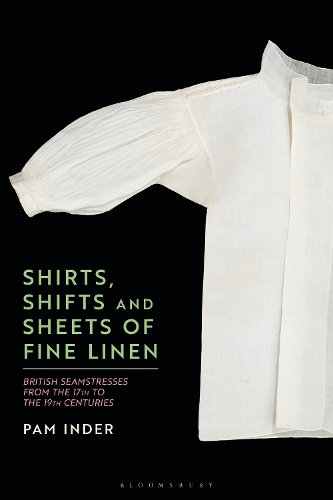
Shirts, Shifts and Sheets of Fine Linen: British Seamstresses c.1600-c.1900
(Hardback)
Publishing Details
Shirts, Shifts and Sheets of Fine Linen: British Seamstresses c.1600-c.1900
By (Author) Dr Pam Inder
Bloomsbury Publishing PLC
Bloomsbury Visual Arts
11th January 2024
United Kingdom
Classifications
Tertiary Education
Non Fiction
Cultural studies: dress and society
Fashion and beauty industries
Social and cultural history
European history
646.2092241
Physical Properties
Hardback
328
Width 160mm, Height 238mm, Spine 22mm
820g
Description
Shirts, Shifts and Sheets of Fine Linen explores how the jobs of the seamstress evolved in scope, and status, between 1600-1900. In the 17th and early 18th centuries, seamstressing was a trade for women who worked in linen and cotton, making mens shirts, womens chemises, underwear and baby linen; some of these seamstresses were consummate craftswomen, able to sew with stitches almost invisible to the naked eye. Few examples of their work survive, but those that do attest their skill. They took apprentices and generally made a good living by the standards of their time. However, as the ready-to-wear trade expanded in the 18th century, women who assembled these garments were also known as seamstresses, as were women employed by families to keep the household linen and in good order. By the 1840s, most seamstresses were outworkers for companies or entrepreneurs, paid unbelievably low rates per dozen for the garments they produced, notorious examples of downtrodden, exploited womenfolk. This book explores the seamstresss change of status and the reasons for it, and hints at the resurgence of the trade today because so few 21st century women are now individually skilled at repairing and altering clothes.
Author Bio
Pam Inder is an independent scholar and was formerly Curator of Applied Arts at first Exeter and then Leicestershire Museums (specialising in dress history), after being an Assistant Curator at Birmingham City Art Gallery. She later taught at Staffordshire and De Montfort Universities, UK. She is the author of the companion book, Busks, Basques and Brush-braid (Bloomsbury, 2020).
